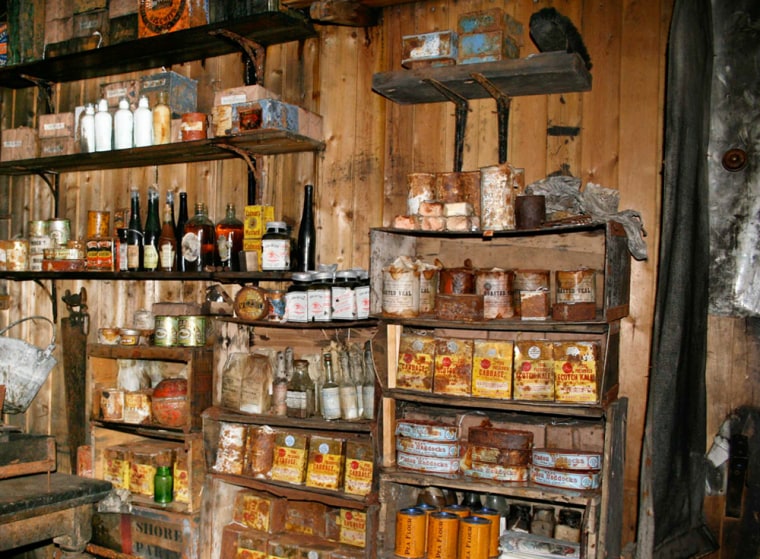A neat stack of seal meat sits in an enclosed porch, tins of cocoa and cabbage are piled on shelves inside, and all seems ready for Antarctic explorers Robert Falcon Scott and Ernest Shackleton to take shelter.
Of course they won't: their kind of exploration of the southern continent ended nearly a century ago. But this remote, snow-shrouded shelter hut appears eerily intact.
Prefabricated in New Zealand in 1910, transported by ship and reassembled on a spit of land on McMurdo Sound in January 1911, the hut was built for the final expedition led by Britain's Scott, whose ill-fated race to reach the South Pole has become the stuff of legend.
It was the biggest structure in Antarctica when it was first built, some 50 feet (15 metres) by 25 feet (7.5 metres), with doors insulated with seaweed and lined with felt. The 52 officers and crew depended on the hut for shelter and for a semblance of civilization: there were clotheslines, clocks and a gramophone.
The expedition photographer, Herbert Ponting, built a darkroom, and the chemicals and implements appear poised to document the mens' lives through most of 1911, including the dark cold winter.
"The men celebrated Mid-Winter Day on June 22 as if it were Christmas," according to one account of life in the hut, which was named Terra Nova after the ship Scott bought to bring them there.
"They often had evening lectures. One of the scientists would talk about the recent findings of his work, or they would simply tell stories and laugh. When the weather was good they would even go out on the sea ice and play soccer," the account said.
Shackleton's men also took refuge in the Terra Nova hut.
Now accessible only with permission and a key, the hut was restored as a shrine to Scott and his men in 1960.
Every corner is a tableau of living history. The center of the room is dominated by a big wooden dining table, with some serving dishes laid on it, as if the men were simply out for the day.
One alcove has the remains of an Emperor penguin and an issue of the Illustrated London News.
Bales of hay are stacked outside the hut, food for the ponies that Scott's team sometimes used, along with sled-dogs and untried motorized sleds. There are also the remains of dogs outside, one with a collar still around its neck.
Pony bridles are slung over some of the bunk beds inside. The ponies themselves either died or were eventually shot on the journey south, as were the sled dogs. In the end, Scott and four of his men did arrive at the South Pole on January 17, 1912, five weeks after the Norwegian explorer Roald Amundsen.
Amundsen made it back safely but the Scott team died on their return trip toward McMurdo Sound.
